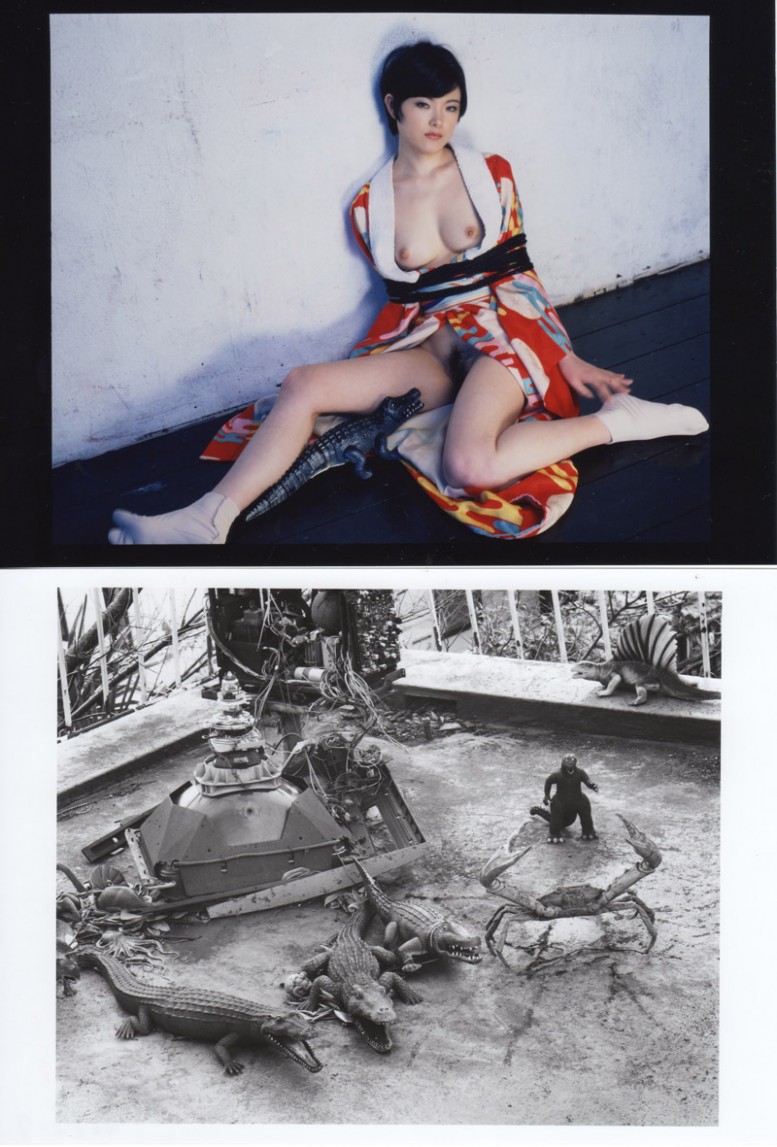It Was Once a Paradise, Japanese photographer Nobuyoshi Araki’s new series of photographs, shown as 40 diptychs, is a bi-polar collision of the id and superego. In his new, as-yet-unseen series, which will be shown later this month at Reflex Art Gallery in Amsterdam, Araki “addresses the complex relationship between loss and desire, which translates as despair and hope, separation and symbiosis, the internal and the other.” Nobuyoshi Araki, who is now 71 and has published over 400 books of photography, has had a life long fascination with sex & death in his work.
In his new series, Araki’s diptychs are a contrast of two independent, but mutual worlds. On one side are black and white photographs of close-ups of his Tokyo balcony, a place that was once his own private world shared with his late wife and cats - a sanctuary now overrun with the despairing, assemblage of toy monsters and dinosaurs - symbolic of a certain infestation of deep melancholy and, seemingly, a realization of mortality. On the other side of the diptych is a color image of a beautiful, nude women, intricately tied up - adumbrative of the eternal, erotic, technicolor Oz of sexual desire. In Japan, Kinbaku, or ’the beauty of tight binding’ is the intricate art of bondage of which Araki is somewhat of a master. It can be concluded though, that a true elucidation of the meaning of Araki’s photographic oeuvre is not entirely attainable - which is a testament to their beauty and vast psychological complexity. Araki is, after all, an artist. Nobuyoshi Araki, It Was Once a Paradise will be on view from April 23 till July 16 2011 at the Alex Daniels - Reflex Gallery in Amsterdam. There will also be a book published in conjunction with the exhibit. www.reflexamsterdam.com
Text by Oliver Maxwell Kupper for Pas Un Autre




